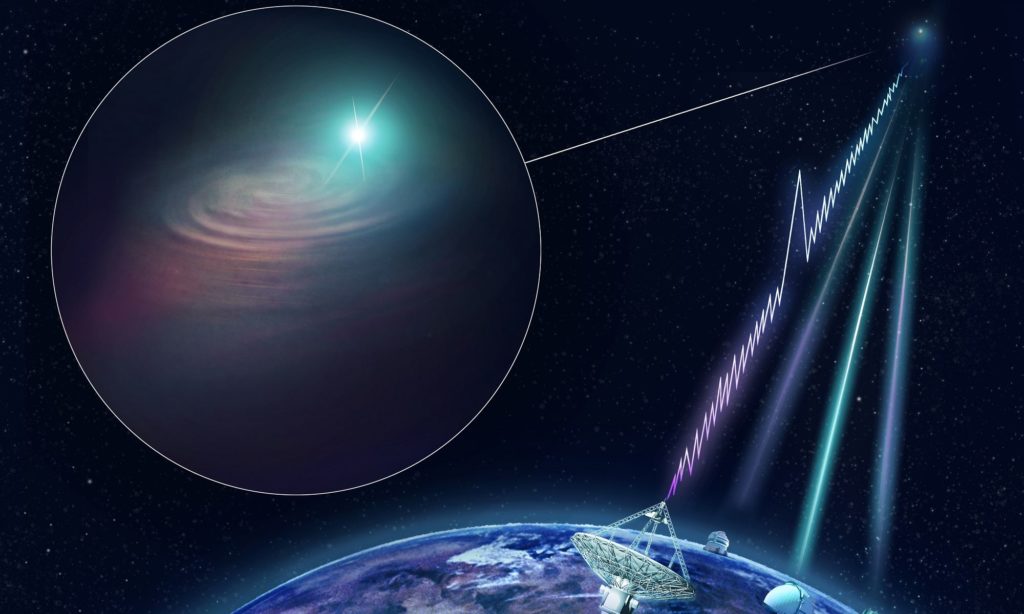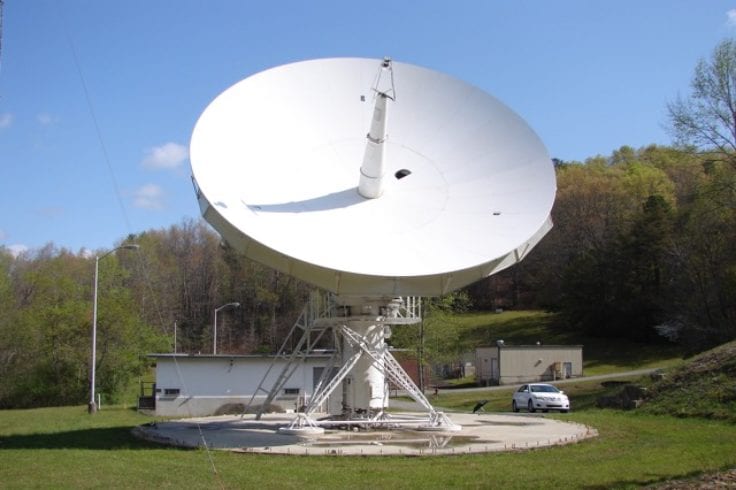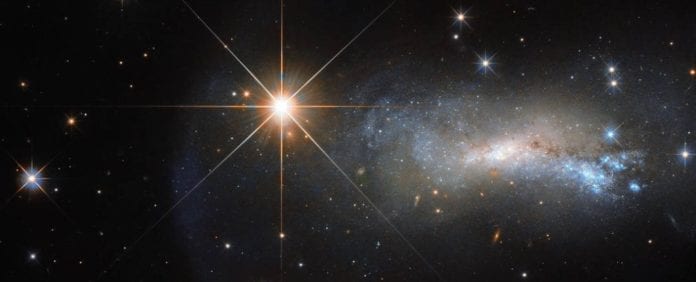Radio Bursts are mysterious objects that astronomers have investigated for quite a while now. There is no definite explanation as to why these events happen or what causes them. There are a couple of competing theories that come close to predicting the erratic behaviour of these celestial events.
However, a lot needs to be done before we can say with certainty what these radio bursts entail. Researchers opine that some high-energy astrophysical process causes these bursts. The first Fast Radio Burst was discovered in 2007 and was named after the researcher who discovered it, Duncan Lorimer.

In another discovery related to FRBs, astronomers, earlier this year announced that FRB 121102 was repeating on a cycle that we could decipher. The Radio burst broadcasts for 90 days and then falls silent for the next 67. The FRB in question is transmitting millisecond radio flares during the 157-day cycle.
The acute shortage of information on Fast Radio Bursts has made the recent discovery much more important. This is the first time that an FRB is following such a cycle, this was ascertained when the source flared up again recently, right on time.
The FRBs that we have observed so far have been located millions to billions of light-years away. This makes it hard to detect the signal and pinpoint the location that it is coming from. All our previous attempts at predicting the behaviour of an FRB have failed.
This is because we do not know much about the processes that produce them. This discovery, however, suggests that these Radio bursts can be predicted without needing to explain their origins in much detail. There might be some valuable information that can be gained by monitoring these phenomena.

The majority of the FRBs detected so far have flared up once and then vanished. It makes one wonder as to what is producing these erratic signals. Some new evidence that came to light recently points towards magnetars as a possible source of these phenomena.
The FRB in question is also known as the most active FRB detected yet. The FRB itself was discovered in 2012 and has remained under constant observation by our radio telescopes. The repeated behaviour of this FRB has provided some valuable information as to what the source could be.
There are a lot of studies to be done by researchers before they can say with certainty what is behind the FRBs, however, predicting the behaviour of one such FRB is a big step in the right direction.
Further Reading:


